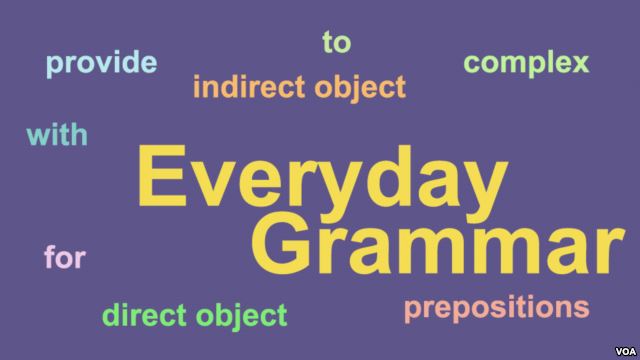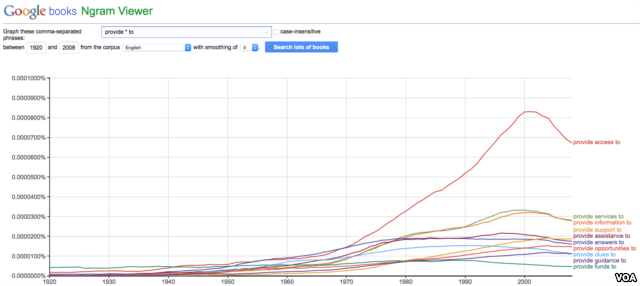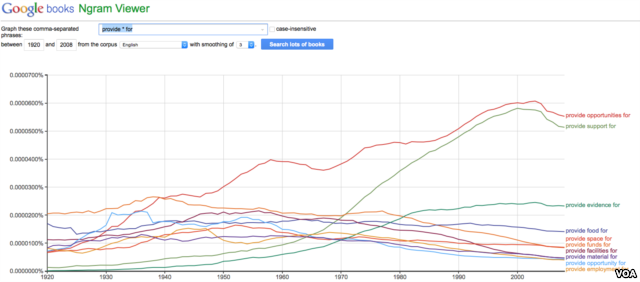VOA慢速英语:每日语法:把介词放到该放的位置
We cannot, of course, explain the small differencesbetween all 150 prepositions here. We can, however,provide you with a few explanations of differentprepositions that use one particular verb: provide.
 |
Provide (someone) with:
When provide is followed by an indirect object, English speakers use thepreposition “with.” Providing (someone) with something means to givesomething wanted or needed.
Here is an example sentence, written by U.S. First Lady Michelle Obama:“Room to Read provides girls with scholarships that cover the cost of housing, food, and books.”
In this sentence, “girls” is the indirect object and “scholarships” is the directobject.
Provide for:
Another preposition with the same verb is “provide for.” “Provide for,” ingeneral, means to make whatever is necessary for someone available to himor her. We often use this expression when we talk about parents providing fortheir family.
In a VOA Learning English story about a Cambodian-American filmmaker, weused the preposition in this way: “She says changes such as migration away from rural areas are allowing more women to find work and provide for their families.”
This preposition can also be used in other ways. “Provide for” can mean tomake it possible for something to happen in the future. For example, in ourstory about water shortage in California, we wrote, “They say it [California]needs to find a way to provide for the growing need for water.”
Provide (something) to/for:
When “provide” is followed by a direct object, English speakers can use theprepositions “to” or “for.” Provide (something) to/for (someone) means thatyou deliver or give something to someone. For example, “The companyprovides health insurance to all of its employees.” “Health insurance” is thedirect object and “employees” is the indirect object. In this example, we alsocould have said “The company provides health insurance for all of itsemployees.”
Both of these sentences are correct, but it is more common to use “provide(something) for” than “provide (something to)” someone. The expressionusing “to” is rather new to American English, according to the Internetapplication Google Ngrams.
Google Ngrams is an app that shows general changes in English usage bysearching all the words in Google’s digital books.
The graph on Ngram for “provide (something) to” shows it was hardly everused before 1960.
 |
Compare that to the Ngram graph for “provide (something for).” Theexpressions appear more often. The expressions also appeared much earlier,around 1920. They were used then almost as often as they are used now.
 |
Understanding English prepositions can be difficult, even for native speakers! But we hope that we have been able to provide assistance to all of ourlisteners and readers.
I’m Jill Robbins.
Jill Robbins wrote this story for Learning English. Ashley Thompson was theeditor.
______________________________________________________________
Words in This Story
prepositions - n. a word or group of words that is used with a noun, pronoun, or noun phrase to show direction, location, or time, or to introduce an object
direct object - n. a noun, pronoun, or noun phrase which indicates the personor thing that receives the action of a verb
indirect object - n. a noun, pronoun, or noun phrase that occurs in addition to a direct object after some verbs and indicates the person or thing thatreceives what is being given or done
- 频道推荐
- |
- 全站推荐
- 推荐下载
- 网站推荐




















